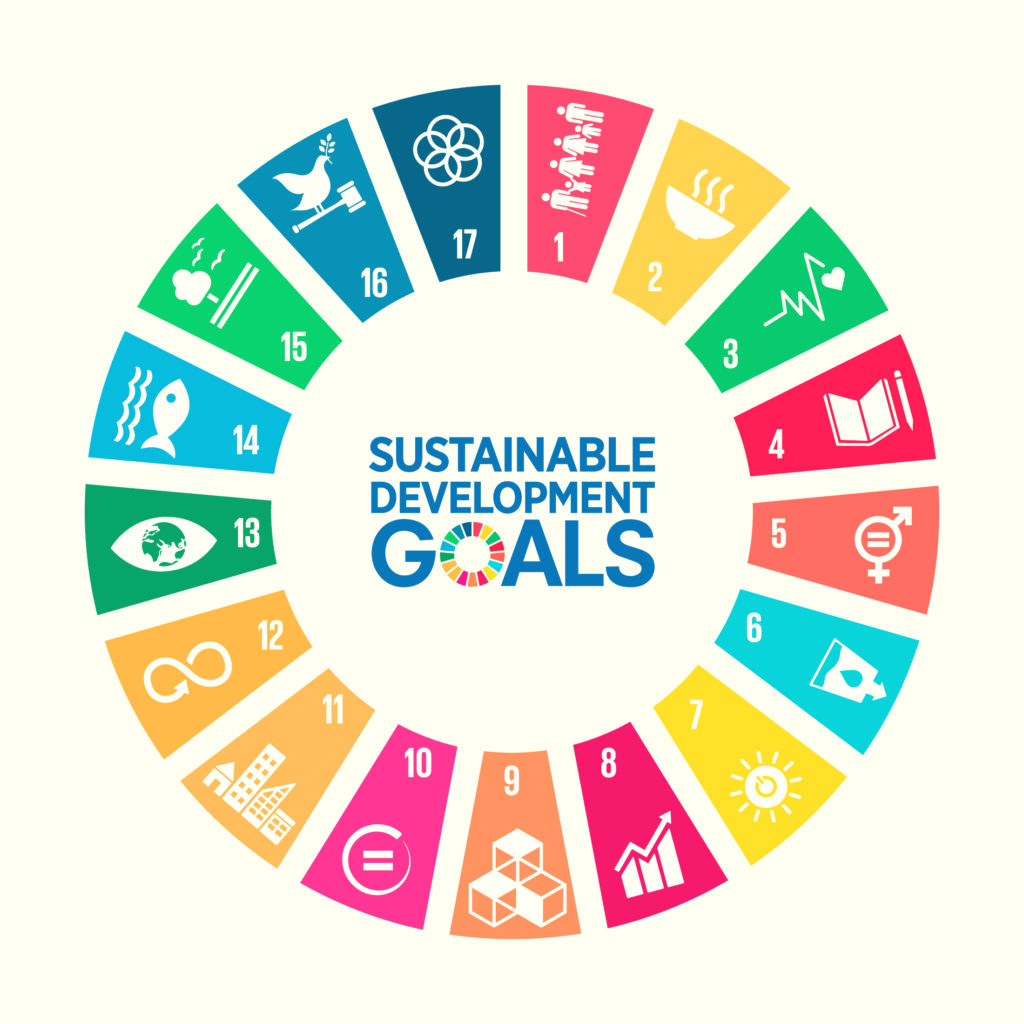Background
Sustainable development goals (SDGs) seem to have been a big success in industry; you see them everywhere, from corporate reports to models to improving sustainability, and I have got to admit I am a huge fan myself!
The SDGs stem from the 2030 Agenda for sustainable development. The goals cover the usual areas of sustainability which are defined as being:
- People
- Planet
- Prosperity
- Peace
- Partnership
These issues are common components of many types of sustainability models (although there are slight variations in terminology). They go beyond the traditional triple bottom line approach (environment, social and economic) but are obviously a more detailed derivation of these issues.
Goals and Associated Targets
There are 17 goals in total based around the five issues mentioned above, and they are usually presented as coloured icons as see in the picture below:

These 17 goals cover a range of issues; the goals have to be achieved by the participant countries by 2030. So we will have to wait and see!
I like the colourful approach that is used to present the goals. After all, a key part to the success of the Sustainable Development Goals is not just the actual coverage, but also that they are clear and visually striking to ensure they are easily noticeable in reports, publications and other sources.
Much like you would when developing an environmental management system for a business, each general goal is backed up by more specific targets and indicators. The targets are the means of improvement whereas an indicator is the means by which progress towards the target can be tracked. For example for Goal 11 ‘make cities and human settlements inclusive, safe, resilient and sustainable’ there are ten detailed targets, a couple of examples being:
- 11.1 By 2030, ensure access for all to adequate, safe and affordable housing and basic services and upgrade slums (target) ; 11.1.1 proportion of urban populations living in slums, informal settlements or inadequate housing (associated indicator), and
- 11.7 By 2030, provide universal access to safe, inclusive and accessible, green and public spaces, in particular for women and children, older persons and persons with disabilities (target); 11.7.1 Average share of the built-up area of cities that is open space for public use for all, by sex, age and persons with disabilities (associated indicator).
You can also find information on how compliance with the goals is progressing.
How to Apply Sustainable Development Goals to Businesses
How do we apply this approach to business? One way to do this is to apply the SDG compass. This is a tool to assist businesses in managing and measuring their contribution to SDGs and aligning their corporate strategies. It essentially provides guidance on how the SDG approach can be adopted by organisations. The SDG compass consists of five steps, these being:
- Step 1 Understanding the SDGs – basically just getting to grips with SDGs and the benefits of compliance with them (basically the business case).
- Step 2 Defining priorities – an assessment of an organisations positive and negative, current and potential effects on SDGs. What you might call establishing a baseline.
- Step 3 Setting goals – now an organisation would set goals that are specific, measurable and time bound to ensure compliance with SDGs. It is also recommended that at least some of the goals are publicly communicated (this helps ensure transparency).
- Step 4 Integrating – the integration of sustainability into an organisation. This will include changes to governance and implementation of development targets at all levels. The difficult bit!
- Step 5 Reporting and communicating – the use of internationally recognised standards to report on progress on meeting SDGs, there is a huge emphasis on using the GRI sustainability reporting standard.
You can find guidance on how to implement SDGs using this approach on the SDG Compass website.
Summary
As we can see SDG’s are popular approaches to dealing with corporate sustainability. They provide a clear, marketable, transparent and standardised approach to improving sustainability. The SDG compass provides a pathway with which an organisation can develop a system to implement them within an organisation.
–
John Binns BSc (Hons), MSc, MSc, MISEP (formerly IEMA)

With over 19 years’ experience working in environment management, John Binns BSc (Hons) MSc MISEP (formerly IEMA) is an experienced environmental tutor and consultant with knowledge of health and safety management.
